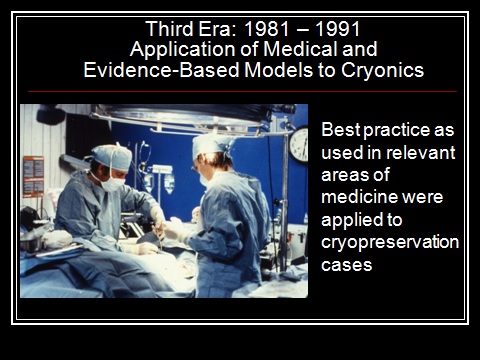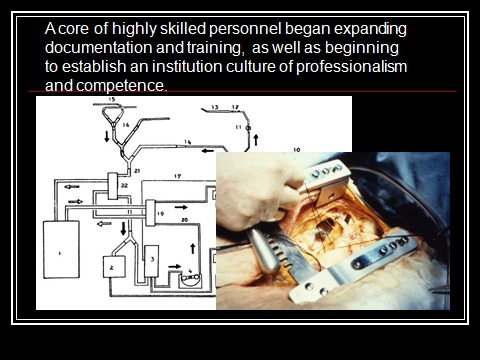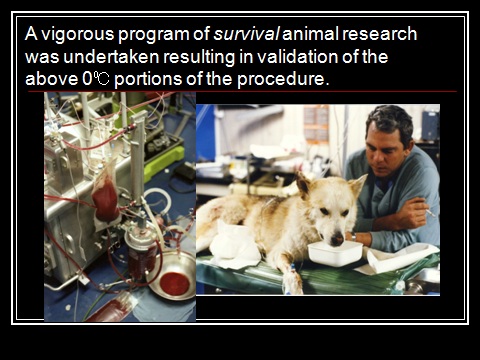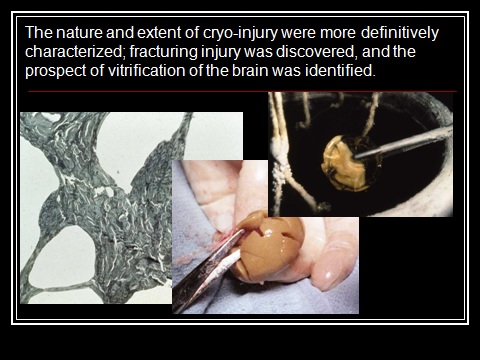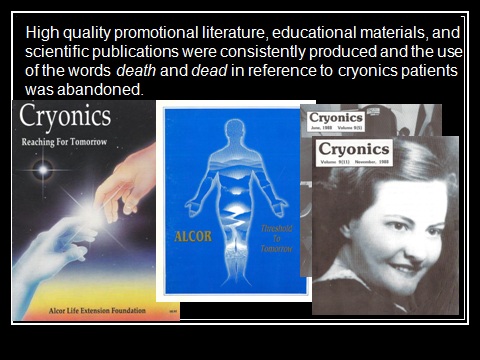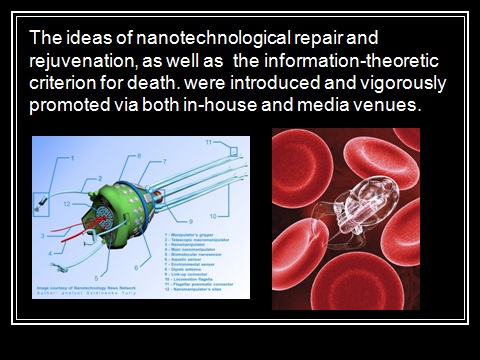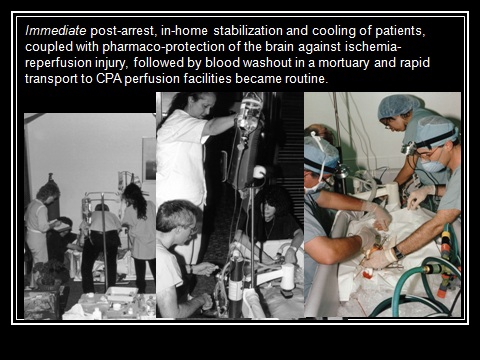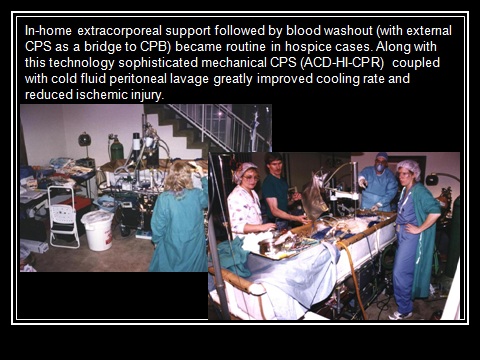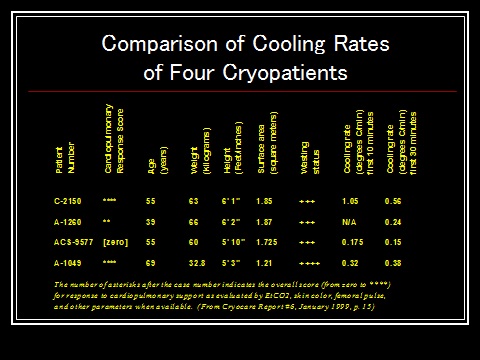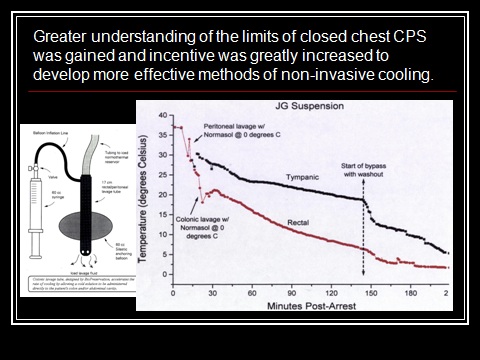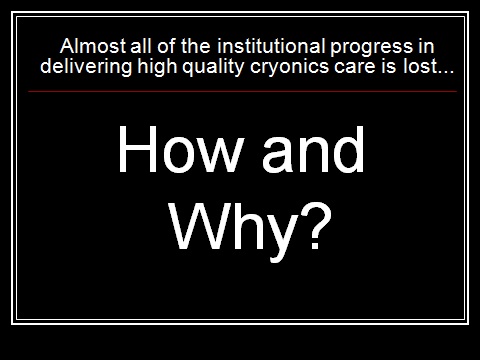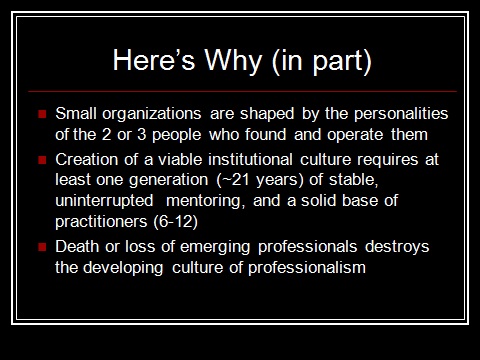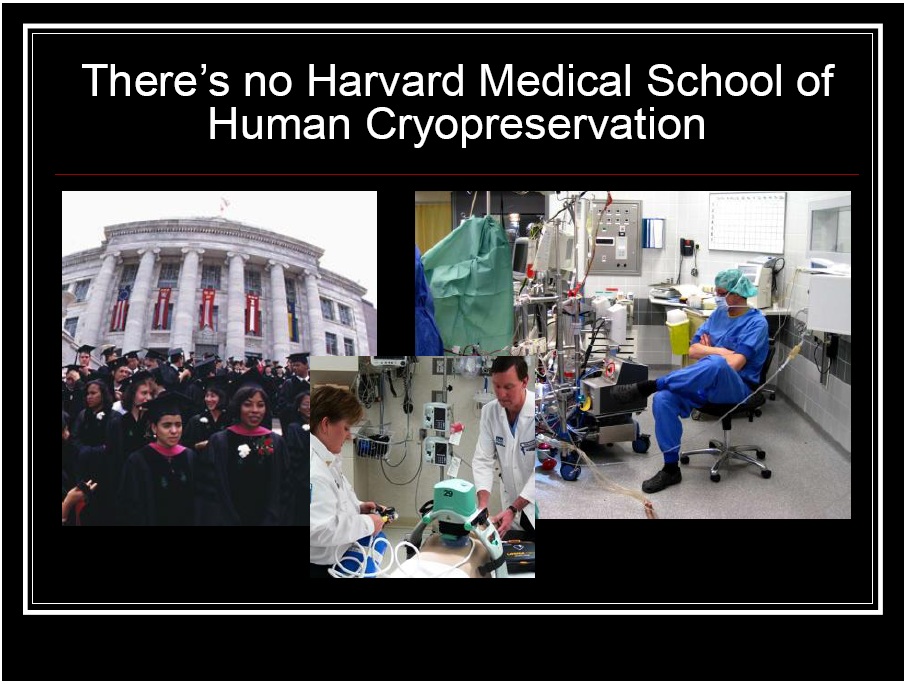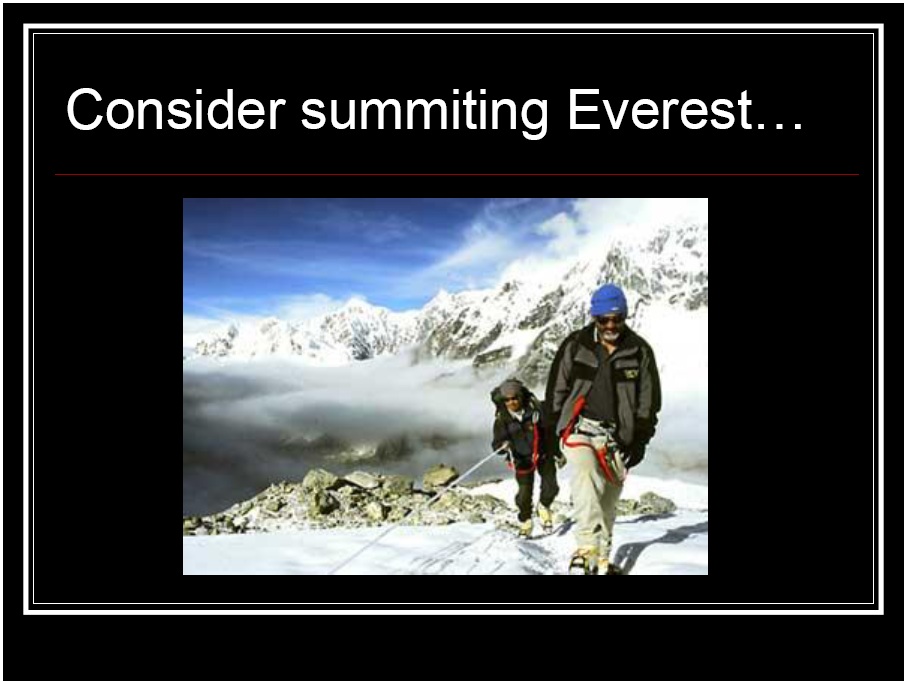By Mike Darwin
CRYONICS’ THIRD ERA: 1981-1991
EVIDENCE-BASED, MEDICALLY- MODELED, RESEARCH- DRIVEN
In January of 1980 I had the good fortune to perform two human cryopreservations back-to-back with Jerry Leaf (then associated with Trans Time) in Southern California. Jerry and I quickly realized that we shared a common vision for cryonics. We undertook to establish that the use of best practice in relevant areas of medicine be applied to cryopreservation cases and we sought to validate and master each biomedical facet of cryonics stabilization and cryoprotective perfusion and cool down procedures.
We began a vigorous program of research to validate each step of the procedures we were applying to human patients, starting with cardiopulmonary support, blood washout and induction of ultraprofound hypothermia. We believed that by mastering these procedures and, where possible, mastering them reversibly (i.e., recovering the test animal alive and well) we would not only gain invaluable skills, but also uncover serious errors and shortcomings in our procedures – errors and shortcomings not possible to detect by armchair theorizing.
This proved to be the case in spades. It took many attempts before we could reliably recover dogs from 4-5 hours of asanguineous perfusion at 5oC. And it was to take the better part of a decade before we were able to recover dogs following ~16 minutes of global, normothermic ischemia. In fact, Jerry did not live to see this accomplished.
An unexpected result of this research work was that a core of highly skilled cryonics personnel was created. The complexity and long duration of the experiments forced people not only to hone their individual skills, but also to work together seamlessly as a team. Survival animal research also resulted in expanded documentation and training, as well as in the beginning of the establishment of an institutional culture of professionalism and competence.
Research was also undertaken to determine to what extent our protocols for cryoprotection and freezing were conferring protection and causing injury. This work definitively characterized the nature and extent of cryoinjury using 4 M glycerol as the CPA and uncovered the problem of fracturing in tissues and organs cooled to below the glass transition point [1] Tg of the cryoprotective solution: http:
//wp.me/p1sGcr-l7
http://wp.me/p1sGcr-lH
High quality promotional literature, educational materials, and scientific publications were consistently produced and the use of the words death and dead in reference to cryonics patients was abandoned, correcting the semantic imprecision that had so handicapped cryonics since its inception. And something else began happen that was quite remarkable. Despite the fact that Alcor was very low profile with respect to the media, we began to grow. In fact, cryonics began to grow again after over a decade of near total stagnation that was the legacy of the devastating hit its reputation had taken after Chatsworth.
Because of our professional and scientific approach to cryonics we attracted the interest of important scientists and theorists far removed from our own discipline. In March of 1984 a manuscript was sent to my attention at Alcor entitled, The Future by Design. That manuscript was to become the book the The Engines of Creation and the man who sent it to me and to others at Alcor for comment and review was its author, Eric Drexler.
The ideas of nanotechnological repair and rejuvenation, and of the information-theoretic criterion for death, were introduced and vigorously promoted via both in-house and media venues.
Immediate post-arrest, in-home stabilization and cooling of patients, coupled with pharmaco-protection of the brain against ischemia-reperfusion injury, followed by blood washout in a mortuary and rapid transport to CPA perfusion facilities became routine.
The feedback we received from ongoing systematic and broad bandwidth data collection yielded new insights, allowing us to vastly improve the quality of care we were delivering. By the simple expedient of monitoring patients‟ temperature descents we were able to more than triple the rate at which patients were being externally cooled during Stabilization and Transport.
In-home extracorporeal support followed by blood washout (with external CPS as a bridge to cardiopulmonary bypass) became routine in hospice cases. Along with this technology sophisticated mechanical CPS (active compression-decompression high impulse CPR (ACD-HI-CPR) coupled with cold fluid peritoneal lavage greatly improved the post arrest patient cooling rate and reduced ischemic injury.
By continuing to collect data and do research we were able to further increase patient cooling rates to ~0.5◦C min for the first 30 min of CPS!
We also discovered that we could detect when cerebral perfusion failed during CPS by continuously recording temperature descent data from multiple sites in the patient. The abrupt leveling-off of the tympanic cooling curve shown in this slide indicates the point where cerebral perfusion during closed chest (mechanical) CPS was lost. The blue arrow indicates the point where effective cerebral perfusion (and thus cooling) was re-established after the start of cardiopulmonary bypass.
DISASTER STRIKES
And then, on 10 July, 1991 Jerry Leaf experienced sudden cardiac arrest and was cryopreserved. Jerry was the lynchpin that held the diverse interests and personalities together that comprised Alcor.
One unappreciated consequence of his sudden and unexpected cryopreservation was the impact the absence of his quiet authority and enormously stabilizing influence would have on the various strong personalities in Alcor, and on their diverse interests and objectives towards Alcor in particular, and on cryonics as a whole. Additionally, Jerry‟s control over the medical and surgical service delivery component to Alcor, via his Cryovita Laboratories, Inc., provided a powerful balancing check on internal power politics.
Thus, Jerry‟s absence critically destabilized the leadership dynamics of the organization.
SLIDE 132
The final blow to the third era of cryonics was the coming of the “tyranny” of Nanotechnology (NT) and the Singularity about which I‟ll have more to say later in these lectures.
How and why did this happen? How did Alcor go from in-home cardiopulmonary bypass to a state where patients count themselves lucky if they even receive prompt heart-lung resuscitator (HLR) support and get packed in ice?
It happened because small organizations are shaped by the personalities of the 2 or 3 people who found and operate them and because creation of a viable institutional culture requires at least one generation (~21 years) of stable, uninterrupted mentoring, and a solid base of practitioners (6-12 people).
If death or loss of emerging professionals destroys the developing culture of professionalism, then the whole system collapses, and usually any effort to recover lost quality and competence must originate outside the failed system (and away from the hard core of the well entrenched institutional cultural paradigm that will have developed in its absence).
SLIDE 135
It is important to understand that the practice of a scientific and medical model based approach to cryonics cannot be achieved by the simple expedient of finding and recruiting medical professionals or medically qualified technical specialists such as paramedics, perfusionists, physicians or nurses to “do the job” of delivering cryonics patient care. Few of you here today would presume that a General Practitioner could competently perform as a neurosurgeon – or even that a psychiatrist could pinch hit for one – even though both of latter are specialists in treating the same organ – the brain.
While the professional practice of cryonics requires a deep and interdisciplinary knowledge of medicine that is not enough. It requires much additional knowledge and training which is not available at university, nor unfortunately, in any structured form at this time. Perhaps more importantly it requires the skill-set and mindset of a highly motivated researcher knowledgeable about cryonics and capable of both asking and answering the right questions. These kinds of individuals are almost always produced by an institutional culture that mentors and motivates, as well as teaches and instructs. Absent that, they are very rare in any discipline and have been especially scarce in cryonics due to its small size and its historically bad public image and scientific reputation.
Professionalism is, at its core, a result of people who care deeply about what they are doing and genuinely believe that their art and science is making a difference and is in some way deeply transformative (or even revolutionary) with respect to the world as a whole. I suppose the most direct, if not the most elegant way to put this, is that to do cryonics well you must love cryonics – love the practice of it – not just the idea of it. That alone is not sufficient, but when coupled with capability and competence, it is the minimum that is required.
SLIDE 136
This is a very hard concept to communicate. Perhaps it can best be conveyed by analogy. The business of climbing a mountain is deceptively simple and consists of walking, climbing and crawling all of which are basic if not intrinsic human skills. However, if we consider what is required to climb a very tall peak, such as Mount Everest, we will soon realize that a great deal more is required than the basic motor skills I’ve just listed. The extremes of temperature and the scarcity of oxygen make it a formidable technical challenge, and what‟s more, a truly awesome biomedical one. All kinds of knowledge and skills both sophisticated and subtle are necessary.
But beyond the purely technical, anyone who would summit Everest must have an astonishing emotional
commitment to the task as well as incredible fortitude and strength of will. It is a horrendous effort and it is not only not for the faint of heart, it is not for anyone who lacks deep commitment to the task. A profession is very much like the sport of mountain climbing. Most of its practitioners will spend all of their professional lives summiting well trod and fairly mundane peaks and guiding others to do the same. A few will summit difficult peaks and in so doing add some small measure of knowledge to the craft. Only a very few will try to go where no others have gone before and do so under the most dangerous and demanding conditions. These individuals are extraordinarily rare and they invariably found or define the professions they practice.
So, while it is possible to train many people to climb mountains, and even to teach them the technical skills required to summit Everest or k2, it is not possible to give them the drive, the stamina and the passionate desire that are also required (at least at this time and with currently available technology).
End of Inherent Failure Mechanisms and Risks, Part 2
Footnotes
[1] The glass transition point is the temperature at which a liquid becomes a glass – or in other words – become a solid by getting thicker and thicker as it is cooled without undergoing freezing. Frozen tissues impregnated with glass forming cryoprotectants such as DMSO or glycerol will be part ice and part glass. The more of the tissue in the glassy or vitrified state the more it will be crack or fracture when cooled below its glass transition point.


